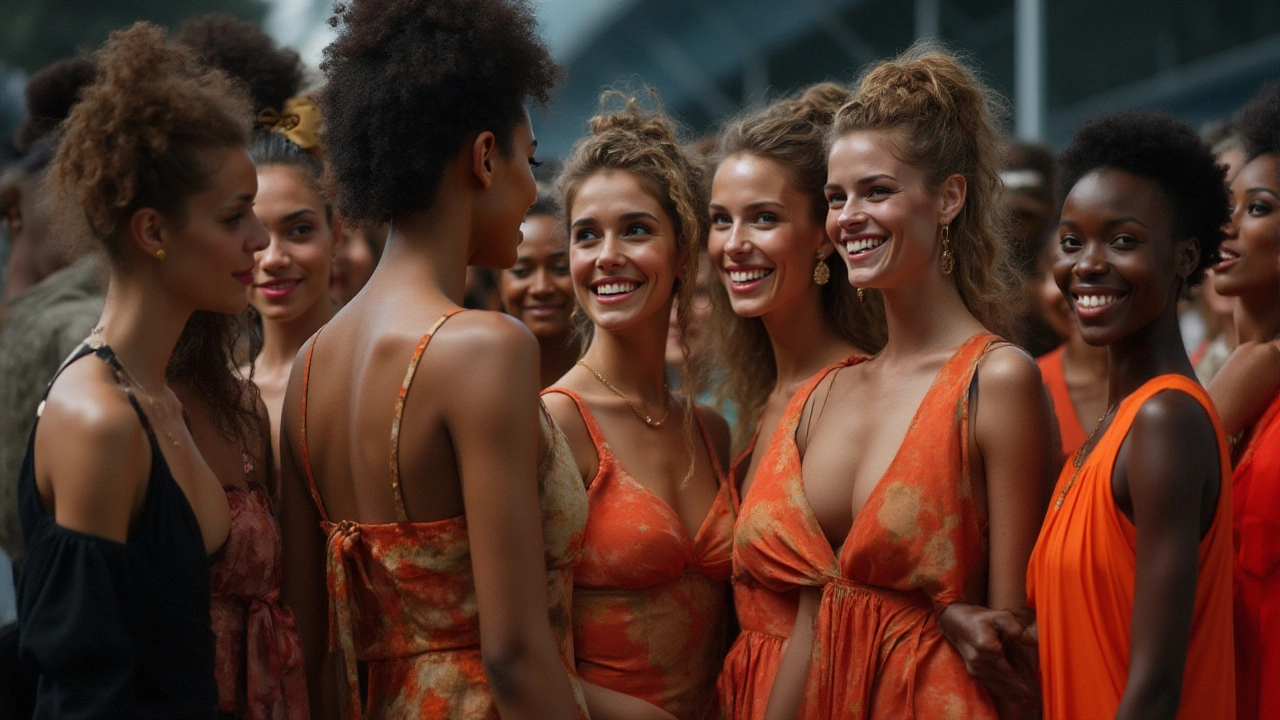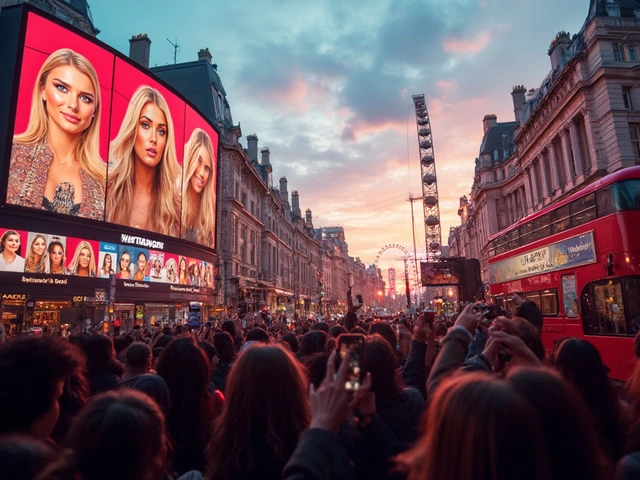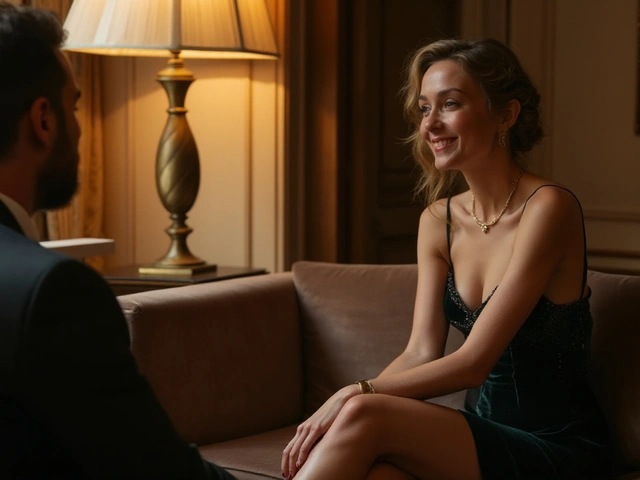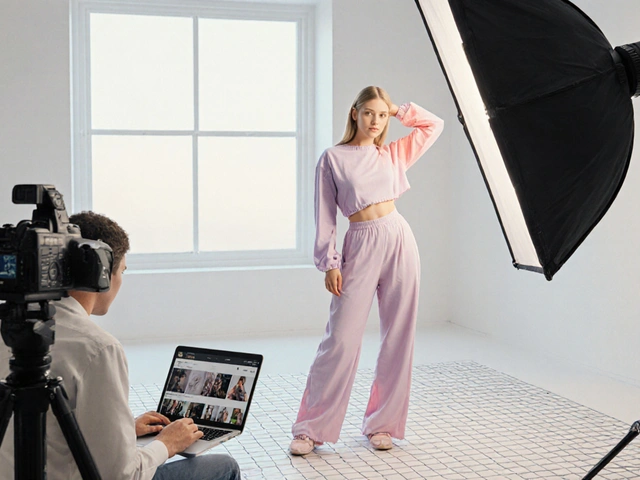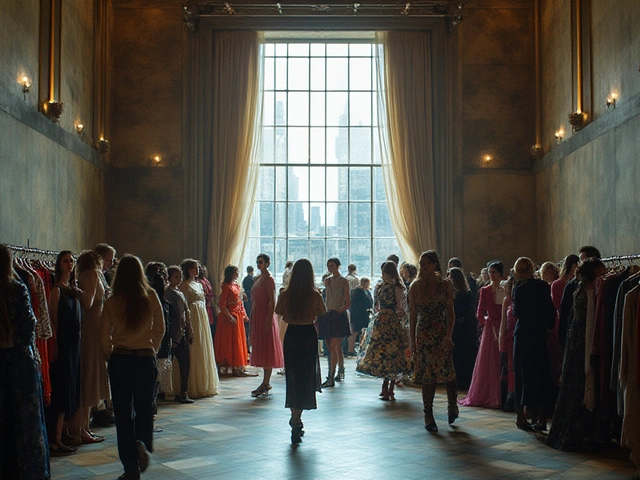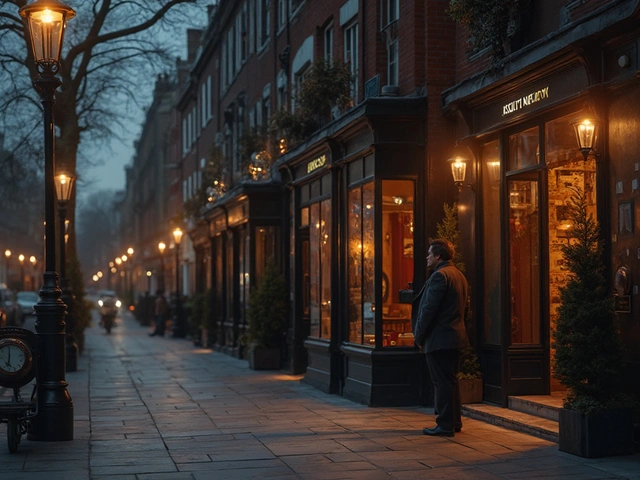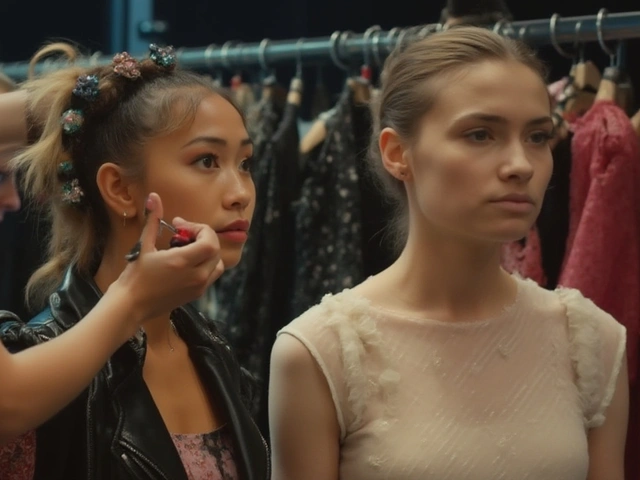What do you picture when you think of a supermodel? Maybe it's a tall, impossibly glamorous figure strutting down the runway, half a world away from regular life. But hold that thought. Supermodels today aren't just faces for fashion—they're movers and shakers who have smashed outdated molds and reimagined what beauty, power, and influence look like.
The Rise of the Supermodel: A New Era in Fashion History
Rewind to the late '80s and early '90s, when a handful of women—think Naomi Campbell, Cindy Crawford, Linda Evangelista, and Christy Turlington—became household names. They transformed the job from simple modeling to international stardom, starring in music videos, snagging million-dollar contracts, and even influencing pop culture. Before this era, models weren’t usually recognized outside the fashion world. Suddenly, supermodels had fans, brand deals, and a voice that mattered beyond glossy magazine pages.
The idea of the ‘supermodel’ slid into mainstream life so quickly. Before you knew it, advertisers clamored for their presence in campaigns because viewers remembered them. Linda Evangelista’s famous quip, “We don’t wake up for less than $10,000 a day,” wasn’t just a flex. It was a signal that models finally took the reins over their own careers. Naomi Campbell, for instance, broke new ground as the first Black model to appear on the cover of French Vogue in 1988, a moment that challenged the fashion industry's long-held biases.
Don’t believe supermodels only changed beauty standards? Consider this: in 1996, Time called that band of original supermodels “The Model Moguls.” Their collective influence even reached politics and TV—remember Cindy Crawford’s commercial for Pepsi? For the first time, designers and photographers started treating models as partners in creativity, not just mannequins displaying clothes. As Calvin Klein once said, “Models aren’t blank canvases. They’re the faces people know, love, and trust—they sell the dream.”
Back then, the supermodel phenomenon also reshaped runway shows. Suddenly, fashion weeks in Paris, Milan, New York, and London stopped being quiet insider events—they became spectacles where fans would actually wait outside, praying for just a glimpse of the top models. Now, their Instagram followers run into tens of millions, and their steps on the runway set trends that ripple into department stores and onto TikTok in a heartbeat.
Diversity and Representation: Breaking Beauty Norms
For decades, the fashion industry showed us one very particular idea of beauty: tall, thin, Eurocentric. That mold finally started to crack, thanks in part to supermodels demanding more. Naomi Campbell, as mentioned earlier, was a trailblazer. Around her, others followed—Tyra Banks broke barriers on runways in Europe and as the first Black woman on the covers of GQ and Sports Illustrated’s Swimsuit Issue. Then came models like Alek Wek, who changed perceptions with her unique look, showing young Black girls everywhere that there's more than one way to be beautiful.
The last decade has made things even more interesting. Models like Liu Wen (the first East Asian spokeswoman for Estée Lauder), Ashley Graham (a leading plus-size model), and Adut Akech (Sudanese-Australian star recognized as Model of the Year in 2019 by the British Fashion Council) have forced major brands to rethink their casting. The push for inclusivity isn’t just about race. People now see models of every shape, ability, and age: Jillian Mercado, who lives with muscular dystrophy, walked the runway at New York Fashion Week. Winnie Harlow, who has vitiligo, became a regular on both runways and magazine covers, giving thousands of people with skin conditions representation they’d never seen before.
Fashion lovers notice when brands genuinely commit. Rihanna’s Savage x Fenty runway shows mix models of all sizes, backgrounds, and genders, smashing the old Victoria’s Secret image of sameness. Models now use their platforms to speak up about racial bias, mental health, and fair working conditions. They’re role models in more ways than one.
Still, there’s work to do. A report from The Fashion Spot in 2023 showed that, although 48% of models cast for major runways were people of color, decision-making power still leans toward industry veterans who grew up with narrower beauty ideals. But the change is real. Big brands now post model search announcements worldwide, opening doors for those never considered before. And with social media’s megaphone, models call out tokenism and demand real change, not just one-off gestures.
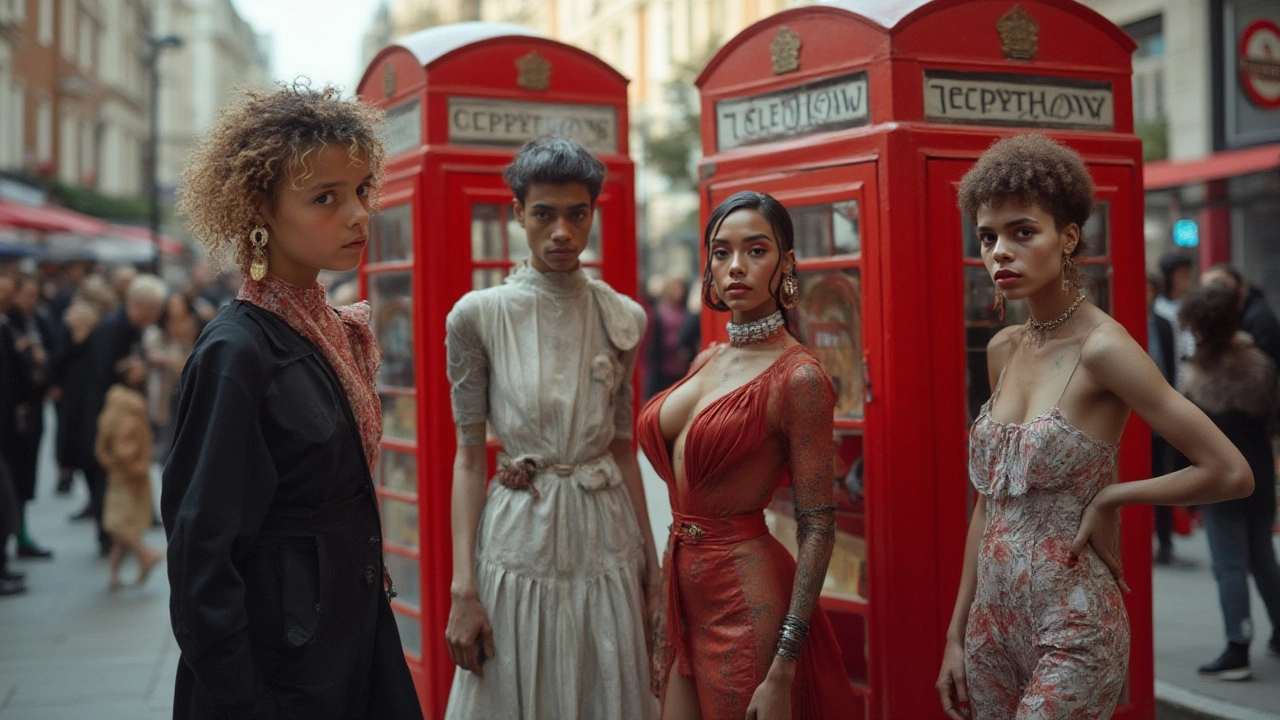
Changing the Game: How Supermodels Influence Culture and Business
Models are more than just faces—their influence seeps into everything from marketing to pop culture. Take Karlie Kloss, who balanced high-fashion gigs with coding camps for girls, or Gigi Hadid, who uses her popularity to highlight social issues. The new breed of supermodels knows their worth: they launch beauty brands (hi, Rosie Huntington-Whiteley), design fashion lines, and sometimes outshine the designers whose clothes they promote.
Social media is a major game-changer. Instagram and TikTok power these women far beyond the runway. Take Bella Hadid—her posts can spark a new trend overnight, turning a simple cat-eye eyeliner into a viral must-have. Supermodels now have direct relationships with fans, who buy what they wear, copy their makeup, and listen to their opinions.
Brands have caught on. They no longer just cast models—they collaborate with them. It’s not enough for a brand to sign a famous name. Models like Paloma Elsesser negotiate creative control. Some sign contracts to co-design collections or serve on corporate boards, carving bigger slices of the pie for themselves.
Here’s a tip if you want to spot the next big trend: check who the top models are working with and what they’re posting about. Watch for those subtle signals—when a model embraces sustainable fashion, fans and brands take note. When they talk about mental health, the industry listens (eventually). The balance of power looks very different these days. No one’s waiting for fashion’s old guard to give permission—and we’re all better for it.
There’s genuine risk-taking, too. Remember Halima Aden, the first hijab-wearing model on the cover of Vogue and Sports Illustrated? Her success prompted big changes in how modest fashion gets showcased—and made young Muslim girls feel seen. Then there’s Anok Yai, who made history as the first Black model to open a Prada show since Naomi Campbell, showing how one moment on the runway can rewrite the rules for everyone.
“Diversity isn’t a trend—it’s the present and future of fashion,”—Edward Enninful, Editor-in-Chief of British Vogue, told The Guardian in 2023.
Breaking Stereotypes: Powerful Stories from the Runway
Some of the best examples of breaking barriers in fashion come straight from supermodels’ real-life stories. Take Karen Elson, once bullied for her flaming red hair, who became the face of campaigns celebrating individuality. Or Valentina Sampaio, the first openly transgender model for Victoria’s Secret and Sports Illustrated. What was once taboo is now part of the everyday runway—because these women refused to take no for an answer.
The shift didn't happen by chance. Supermodels have been outspoken about the realities of their job—the pressure to fit in, constant feedback on appearance, and the mental health toll of never-ending scrutiny. In the last five years, voices like Adwoa Aboah’s and Cara Delevingne’s have helped destigmatize struggles with anxiety or depression. Younger fans find comfort knowing even runway stars have tough days, too.
Sometimes, breaking stereotypes means taking on more than just personal challenges. When Precious Lee became the first Black curve model to walk for Versace, she told Vogue, “I didn’t want to just be in the room—I wanted to change it for everyone who looks like me.” Her presence paved the way for other women rarely seen on high-fashion catwalks.
Here’s something else you might not know: runway diversity boosts profits. After adding more diverse models, brands like Tommy Hilfiger and Fenty saw uplifts in social engagement and sales. When people see themselves reflected in fashion, they’re way more likely to support those brands. If you’re watching the latest runway broadcast or scrolling the feeds, look out for faces and bodies that resemble real world diversity. The best shows aren’t flawless; they’re a celebration of differences.
Want to support real change? Follow and amplify models who advocate for inclusion. Share their stories. Demand more from brands. It’s everyday actions—like speaking up, buying from inclusive designers, or sharing the stories behind the pictures—that keep the movement alive. Remember, big changes usually start with small acts that add up over time.
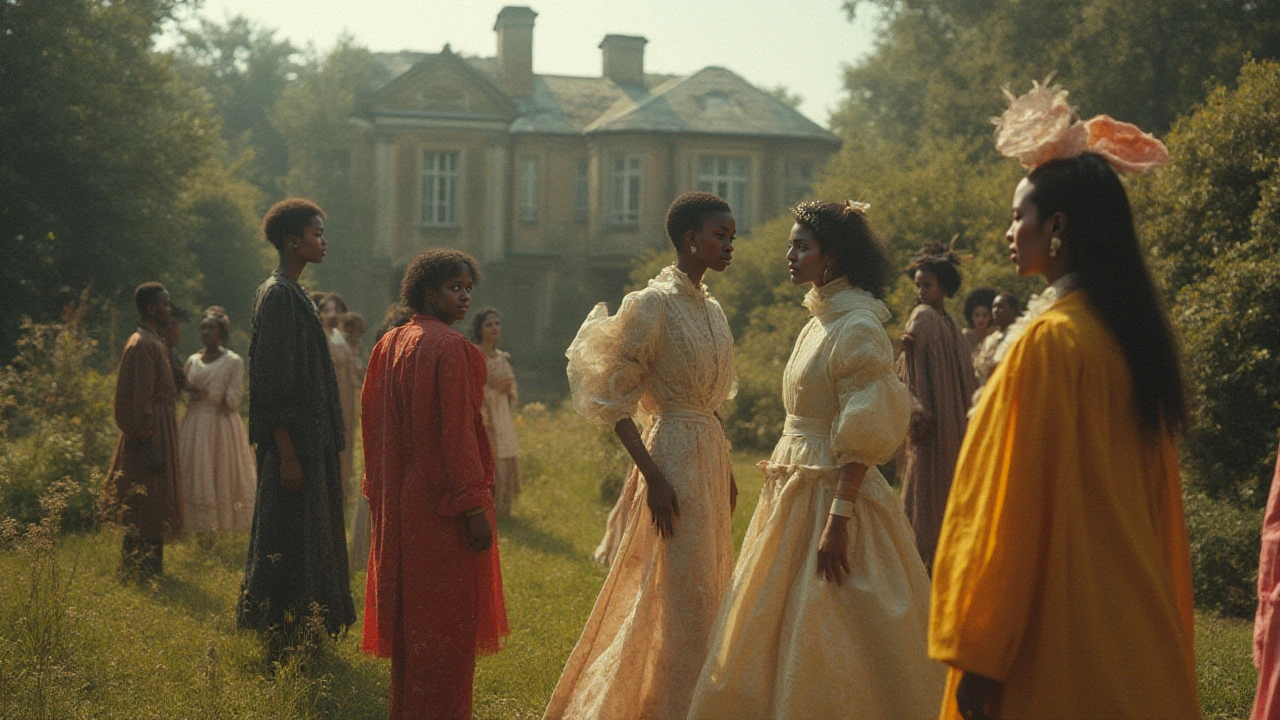
The Future of Fashion: What Supermodels Are Teaching the Industry
If you think the fashion world is done evolving, think again. Technology is playing a massive role. Digital avatars are sharing campaigns with flesh-and-blood models, but those real connections—raw, honest moments—still matter most. Supermodels are mastering both. They host livestream talks about anxiety, start conversations about climate change, and call out greenwashing by brands. When Bella Hadid showed up at Coperni with a spray-on dress, she reminded us that fashion is supposed to surprise us—and push us to confront uncomfortable questions about beauty, labor, and technology in the industry.
Gen Z models have different priorities. They care about authenticity, values, and how brands treat people—behind the runway and beyond. Social justice isn’t an afterthought. As a sign of the times, many top names now skip shows if they clash with their ethics or wellness needs. Brands know that if they’re not listening, they’ll lose the next generation of fans—and buyers.
Here are some tips for staying inspired and maybe even breaking your own barriers:
- Follow emerging models from regions outside the fashion capitals—often the freshest voices.
- Look for brands collaborating with their models for behind-the-scenes content or advocacy work.
- Use social media to highlight stories from underrepresented models, designers, and artists.
- Try new trends, but stay true to your own style—fashion’s best moments come from self-expression.
- And remember: the supermodels changing fashion today were, not long ago, outsiders themselves. Question received wisdom about who gets to shine.
The runways have changed, but the revolution isn’t finished. Every season resets expectations for what fashion can and should be. The next time you spot a campaign featuring a face or a body that might have been erased a decade ago, remember—all those barriers broken are steps toward a more honest, interesting, and human industry.
